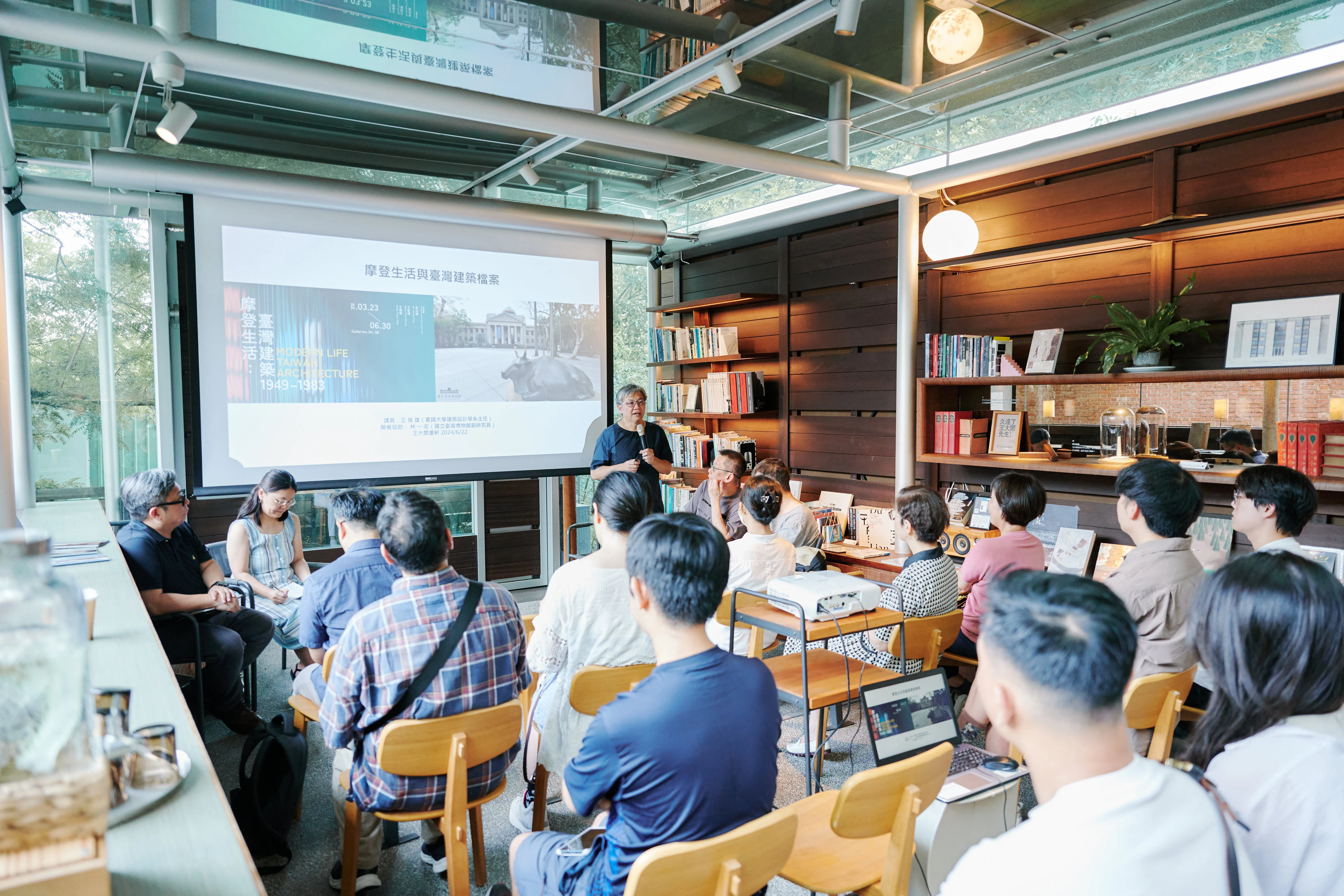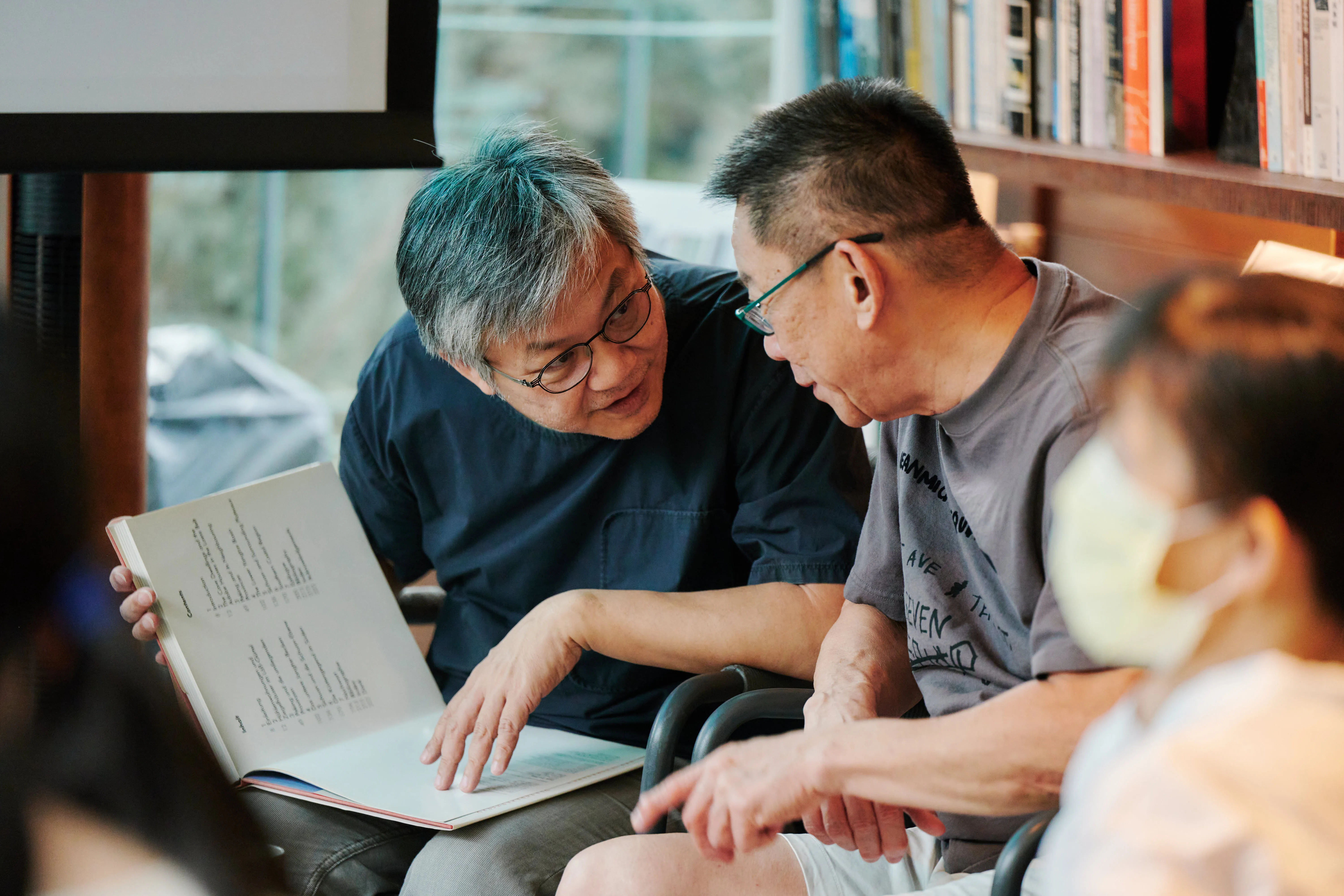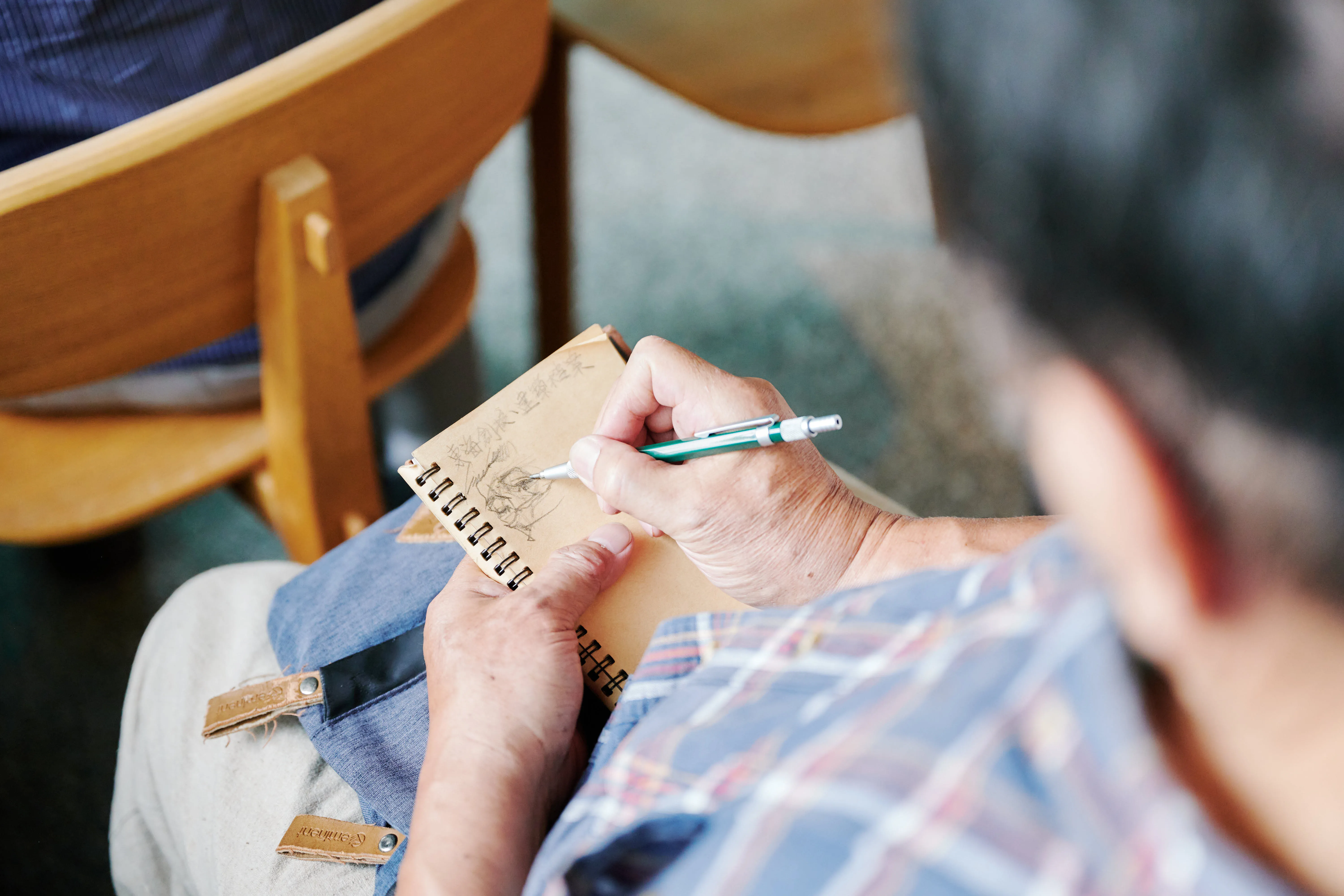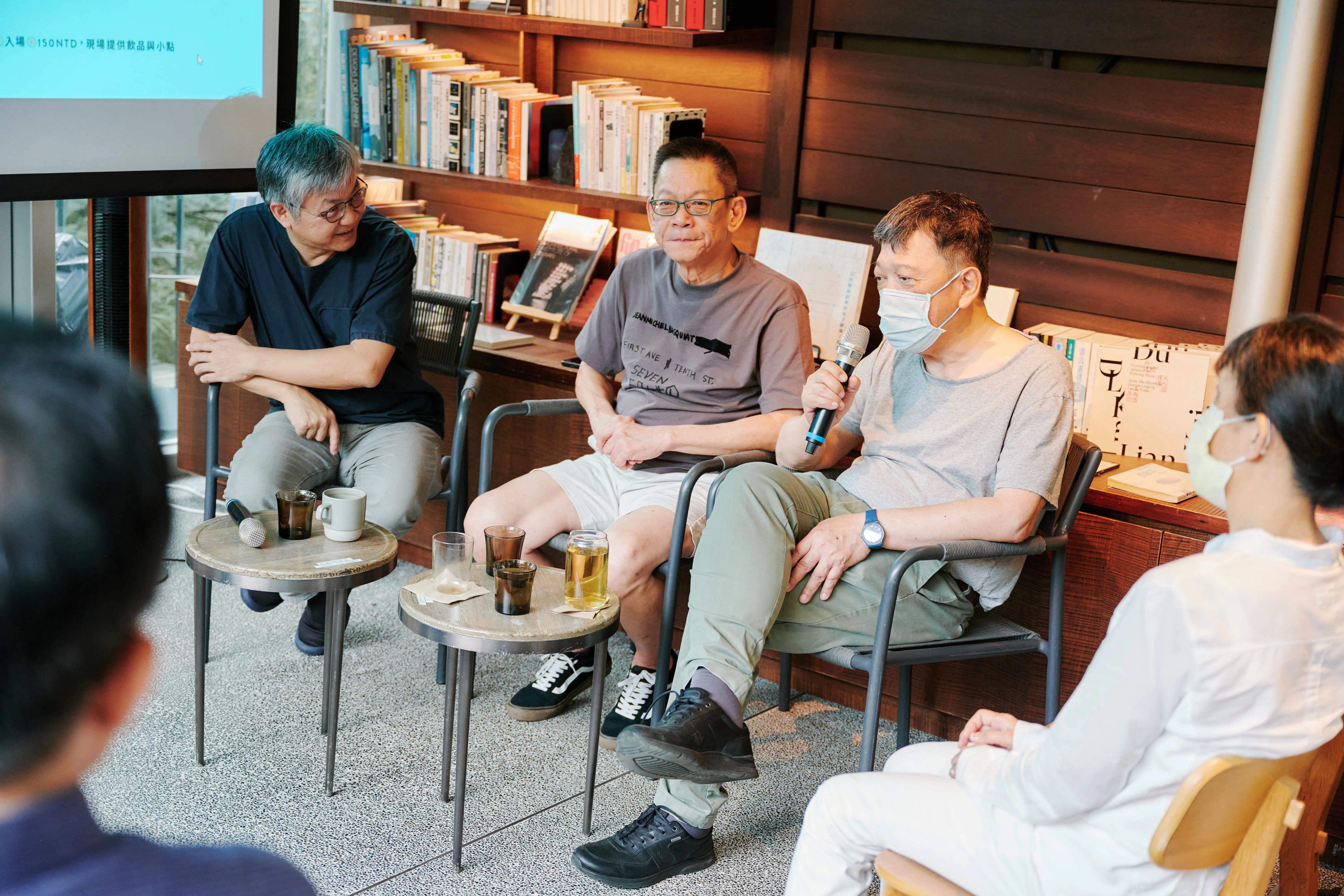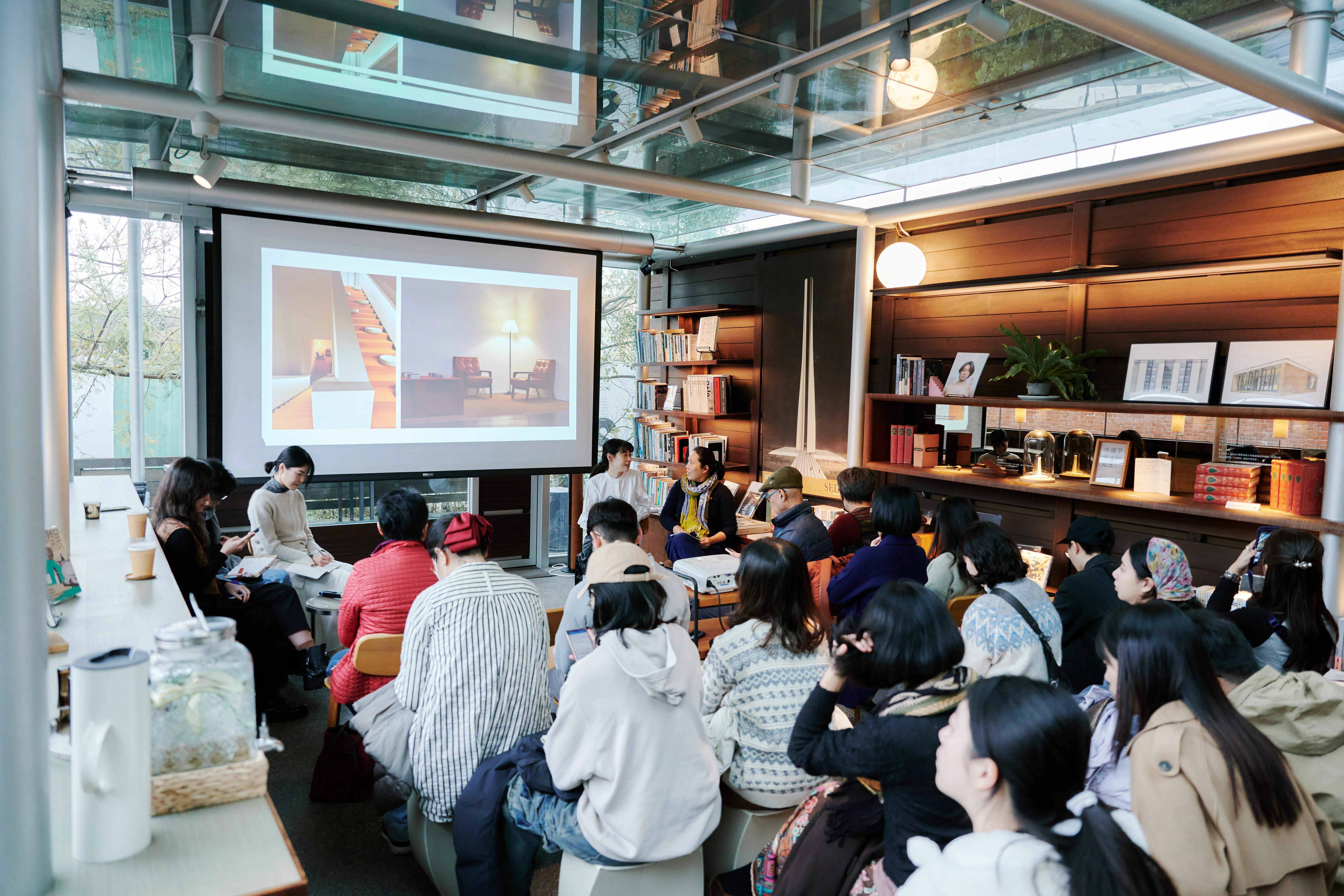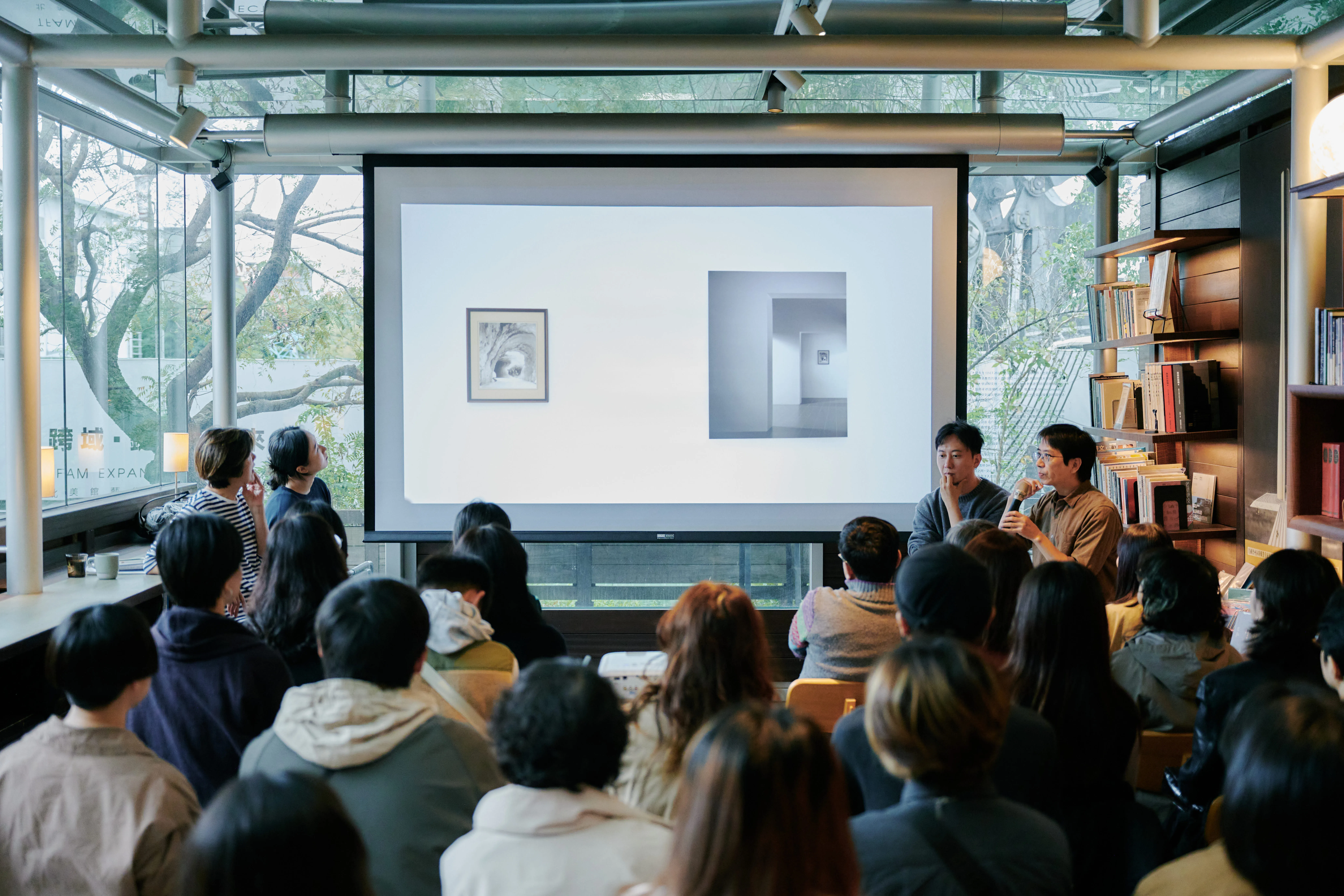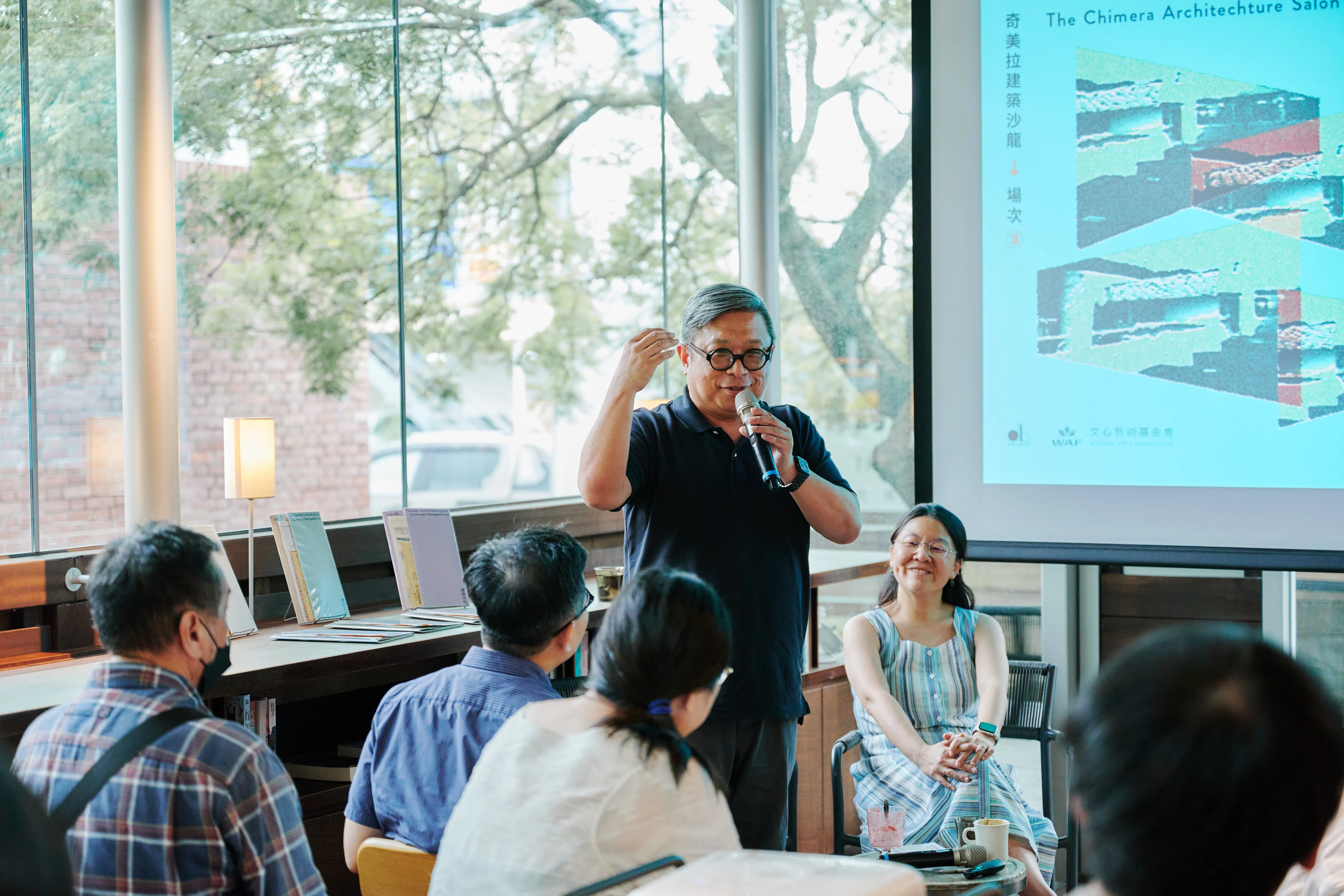
Chimera Architecture Salon | Session 3 | Postwar Architectural Archives and Related Research
Speakers
KWANG-TING, WANG JUNHSIUNG, WANG TSEN-WING RESEARCH PLANNING TEAM “MODERN LIFE: TAIWANESE ARCHITECTURE 1949—1983”
Guest
Shen Mengying Executive Secretary, Taiwan Museum Cultural Foundation
Xu Changzhi, Assistant Professor, Department of Architecture
locations
Wang Daishui Shuxuan (No. 153, Section 3, Zhongshan North Road, Zhongshan District, Taipei City)
fees
$150 (Paid upon arrival, drinks and snacks are available on site)
Event Content
The third lecture begins with the Taiwan Museum's “Collection of Classic Building Design Patterns in Post-WWII”, which began in 2006, to discuss the interpretation and reproduction of the architectural archives in the exhibition. The lecture was invited by Shen Meng-ying, Executive Secretary of the Taiwan Museum Cultural Foundation, to share personal research and exhibition applications in the Governor's Archives, the National Archives of Taiwan, the National Archives of Taiwan, the Taiwan Museum Archive of Modern Architecture, and the National Cultural Database Archives.
In addition, Xu Changzhi, an assistant professor at the Department of Architecture at Chung Yuan University, will present this year's documentary series “From Imagination to Reality”, which has been documented and preserved by translating architectural facts, professional architectural drawings, expert guidance, and dynamic models. The story of buildings such as Shin Women's University, Kaohsiung Sanxin Business Wave Building and Taipei Medical University. Demonstrates the close relationship between architecture and culture of life.
Event Review
It opens with Professor Wang Jun-Hung explaining the beginning of the architectural drawing collection scheme and how it is carried out, from nomination, contact, delivery to completion of the collection. In addition to digging up many valuable pictures, the story behind the drawings can be learned from the architect himself or his family. The building archive that has been created has become a time tunnel, and many of the illustrations serve as evidence, opening a new chapter in the discussion of “What is Post-War Architecture in Taiwan” from a scientific point of view.
Professor Shen Mengying then shared the applications of architectural archives in his research on modern residential history: including the Keelung Wharf workers' housing designed by the architect Wang Daishi and the workers' housing designed by the architect Chen Yan, in the process, due to the collection of architectural drawings and written records in different databases. The study provides a great deal of help. In recent years, the results of architectural archival research have been promoted to the general public through publications such as Mr. Shen's book “100 Years of Taiwan House” and the “Architecture Culture” issue of the Taibo Cultural Foundation. Teachers hope that the integration of online platforms can be used in the future to link the architectural collections of different institutions, reducing the cost of resources and resources for library collections.
“From Imagination to Realization,” this documentary, which was created by Professor Xu Changzhi as its convener, is the basis for Dr. Xu's doctoral thesis on the construction of the Jingliao Shrine in Tainan. During the preparation of the video, teachers are constantly thinking about how to translate architectural cognition into images and make the public understand the building. The documentary guides the public to the real work of architects, the value of modern architecture, and the social contributions made by architects through the use of easy-going words, illustrations and photographs, 3D simulations, real-life applications, and interviews with the architect Gottfried Böhm. Finally, Teacher Xu mentioned that his experience in making the documentary, which made him feel “able to say something about a building that cannot be opened”, was also the impetus for his ongoing architectural documentary.
People have studied the history of architecture that has often involved society, culture, aesthetics, form, space, but little has studied “how buildings are covered.” Because of the lack of data on construction diagrams, researchers can only measure, so the collection of classical drawings can begin from this point of departure, the creation of the archive becomes more important for the study of architectural history. Today, thanks to the uninterrupted collection, it is possible to promote the establishment of the Taiwan Architecture Museum through many years of effort. Contemporary society has a growing expectation of architectural culture, from archival collection, study and interpretation to reproduction, and believes that the future will enable the public to communicate and understand architecture in more non-architectural languages in the future.
